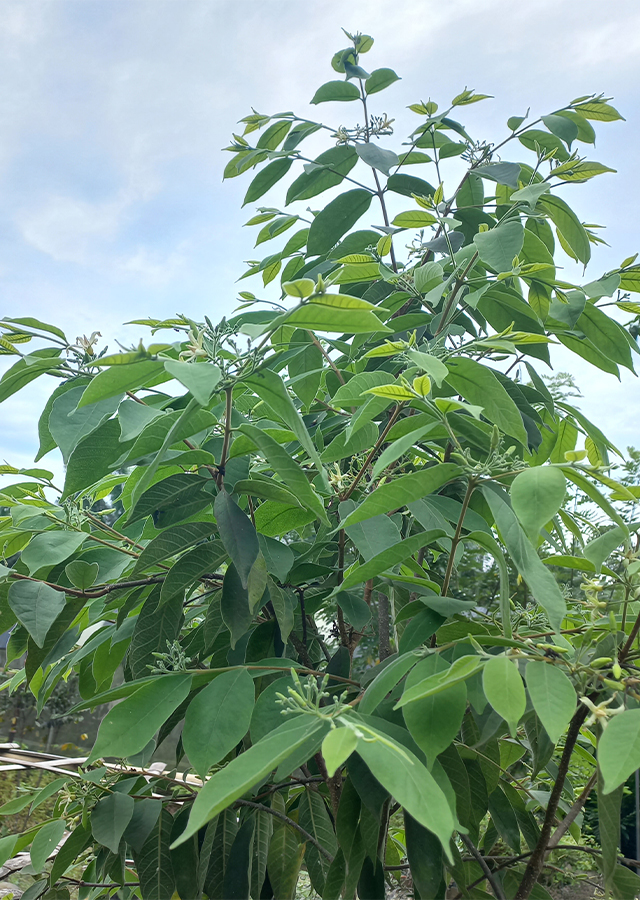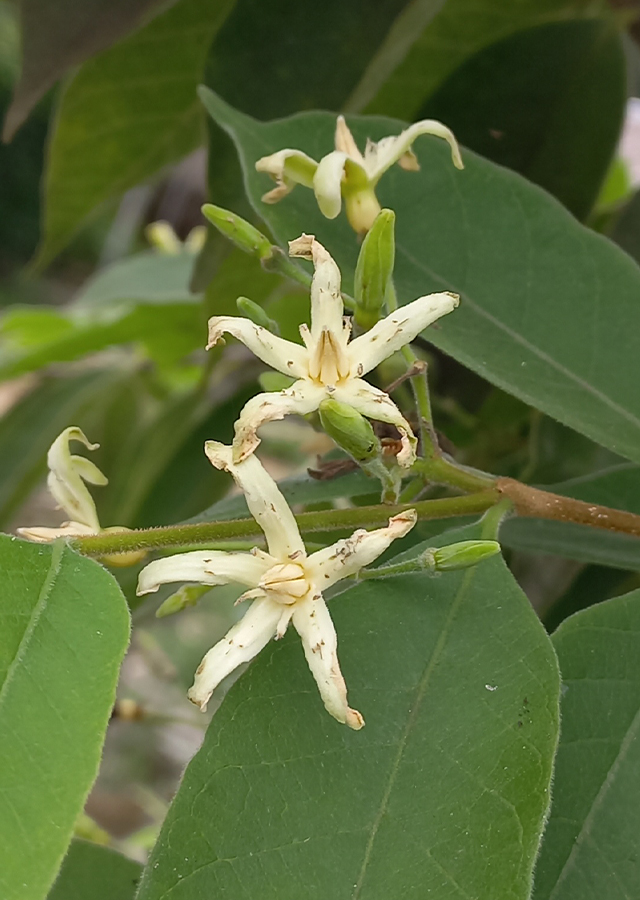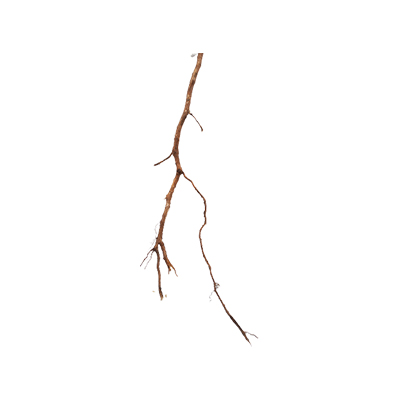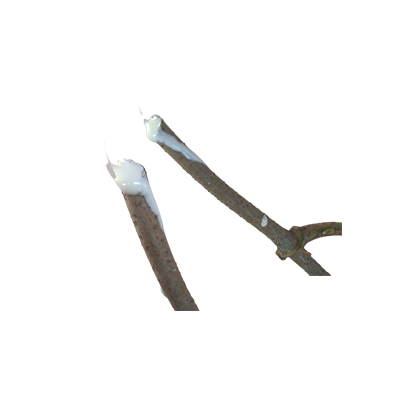Wrightia Plant
Wrightia arborea (Dennst.) Mabb.
Apocynaceae
Location in our garden
Principal



Synonym
Wrightia tomentosa Roem. & Schult.
Wrightia hamiltoniana Wall.
Wrightia wallichii A.DC.
Habitus
Trees. A deciduous tree with a rounded crown; it can grow up to 20 m tall.
Part Used
Leaves
Bark
Latex
Roots
Growing Requirements
Full Sunshine
Need Shade
Drought Resistant
Habitat
Forest
Terrestrial
Overview
Wrightia arborea is a plant from the Apocynaceae family whose natural distribution includes India, Sri Lanka, Burma (Myanmar), South China, Laos, Vietnam, and Thailand. The tree is sometimes harvested from the wild for local medicinal use and as a source of wood and dyes. It is sometimes grown as an ornamental in Africa.
Vernacular Names
No found information on this. Need further research.
Agroecology
A plant of the tropics, where it is found at elevations up to 1,300 metres. It grows best in areas where annual daytime temperatures are within the range 22 - 32 °C, but can tolerate 5 - 45 °C. It prefers a mean annual rainfall in the range 1,200 - 2,400 mm, but tolerates 900 - 3,800 mm. Grows best in a sunny position. Thrives on a well-drained, sandy to loamy soil of low fertility. Prefers a pH in the range 5.5 - 7, tolerating 5 - 7.5.
Morphology
- Roots - the taproot is branched, elongated and cylindrical, whitish brown in color, the terminal part of the root has thin true small roots.
- Stems - cylindrical, straight, sometimes bent, not buttressed but often fluted at the base; bark surface cracked lengthwise, bark surface grayish to yellowish brown, inner bark grained or fibrous, yellow, secreting milky sap. Glandular or puberulous, with elliptical lenticels, white or grayish.
- Leaves - green, elliptical to ovate or broadly oblong, leaf tip tapered (acuminate), leaf base pointed (acute), tomentose (feathered like wool) on both sides, opposite leaf arrangement (opposite), petiole, pinnate leaf bone and have 10-15 pairs of secondary veins. The petiole contains few to many pectinate glands in the axilla.
- Flowers - actinomorphic (radial symmetry), bisexual, usually scented, has 5-petals pale yellowish, pink or reddish in color, crown with cylindrical tube to campanulate, tube length 3-7 mm, lobe length 8-16 mm. Petals (calyx) divided into very deep, imbricate lobes. The stamens are in the mouth of the flower tube. Terminal or axillary inflorescence.
- Fruits - consists of a pair of pendulous follicles that are complete or fused only at the very bottom, terete or compressed, completely ruptured by adaxial sutures.
- Seeds - numerous per follicle, narrow fusiform, with tufts of basal hairs, erect embryo, cotyledons wide and convoluted.
Cultivation
Propagated by seeds.
Chemical Constituents
Conessine dihydrate, holarrhine, kurchicine, alkaloids, flavonoids, phlobatin, phenolics, tannins, β--sitosterol, lupeol, α amyrin, glycoflavones-iso-orientin, isoflavones, wrightiadione, phenolic acids, saponins, steroids, terpenoids.
Traditional Medicinal Uses
- The bark of the stem and roots is regarded as an antidote against snake bites and scorpion stings.
- The bark is also used to treat renal complaints.
- Help cure menstrual complaints and kidney complaints, urinary stones.
- Relieve fever, dysentery, toothache, diarrhea, headaches, eye diseases such as cataracts,
- Heal wounds in the uterus, can expel dirty blood, and speed up recovery after giving birth, is an expectorant.
- It has antipyretic, antibacterial, diaphoretic, analgesic, and anti-inflammatory activity.
Part Used
Reference Sources
- Royal Botanic Gardens. Plants of the World Online: Wrightia arborea (Dennst.) Mabb. https://powo.science.kew.org/taxon/urn:lsid:ipni.org:names:82831-1. 18-03-22.
- Useful Tropical Plants Database. 2021. Wrightia arborea. http://tropical.theferns.info/viewtropical.php?id=Wrightia+arborea&redir=Wrightia+tomentosa. 18-03-22.
- Khyade Mahendra S., Vaikos Nityanand P. 2014. PHARMACOGNOSTIC EVALUATION OF WRIGHTIA ARBOREA (DENSST.) MABB. Int. J. Res. Ayurveda Pharm. 5(1).
- Lakshmipriya T. et al. 2017. ANTIOXIDANT, ANTIMICROBIAL AND ANTIPROLIFERATIVE ACTIVITIES OF LEAF
EXTRACTS OF THE INDIAN TRADITIONAL MEDICINAL PLANT WRIGHTIA ARBOREA. IJPSR, 8(3): 1124-1133. - PROTA. Wrightia arborea. https://prota4u.org/prosea/view.aspx?id=30. 18-03-22.



